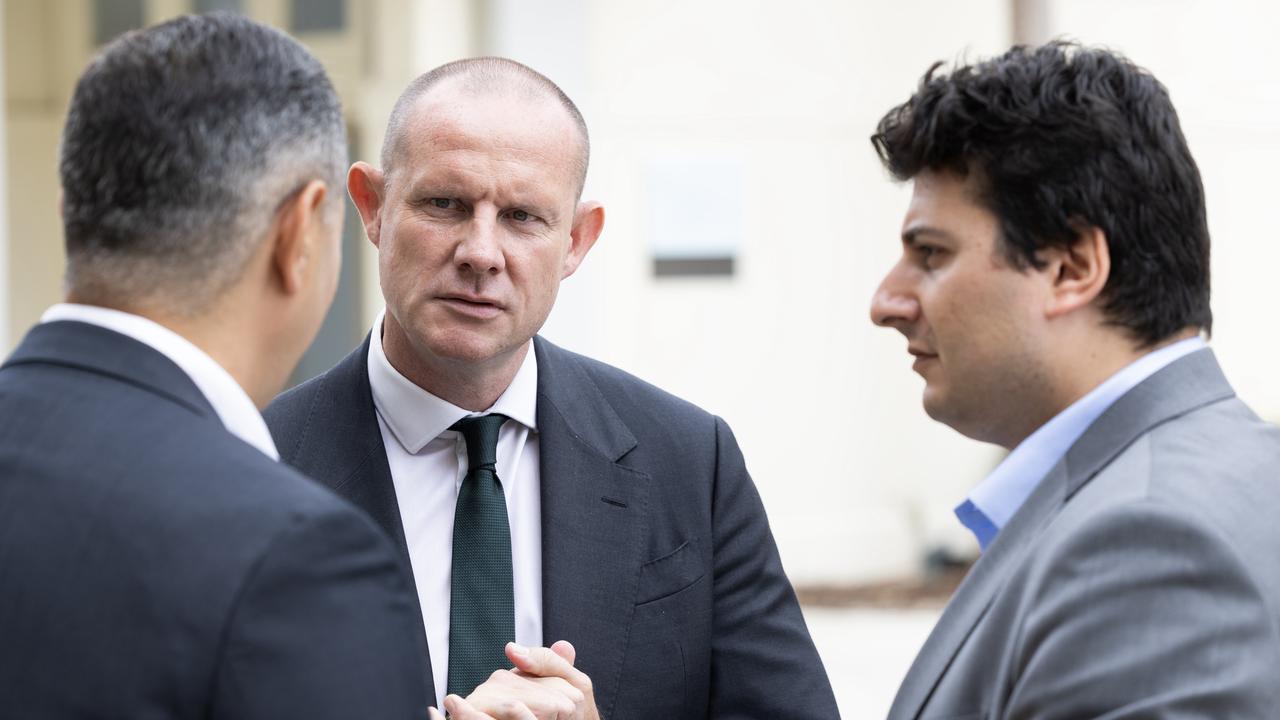Strathfield Massacre: How Wade Frankum killed seven and injured six before turning gun on himself on August 17, 1991
IN 1991, Wade Frankum stood up suddenly in a Strathfield cafe and plunged a 20-inch knife into a girl behind him before unleashing hell with his rifle in one of Australia’s most horrific killing sprees.

News
Don't miss out on the headlines from News. Followed categories will be added to My News.
IT’S Saturday, August 17, 1991 and a sunny afternoon in Strathfield..
The regular Sydney suburb is brimming with visitors just arrived off the country trains, shoppers and local schoolchildren enjoying their weekend.
The popular Coffee Pot cafe in the plaza is doing a roaring trade. Among the customers is 15-year-old McDonald College student Roberta Armstrong, who is there with a friend.
Sitting next to them in the cafe is a man wearing jeans, a denim jacket, grey beanie — and a stony-faced look. He continually turns round to look at the two young girls, but they dismiss his strange behaviour.
The man is Wade Frankum, a 33-year-old taxi driver from North Strathfield, who is about to drain his fourth coffee before committing mass murder.
At 3.35pm, without warning, he suddenly stands up with one knee on the booth, smiles, and plunges a 20-inch bowie knife four times into Roberta’s back. She screams once and collapses and dies at the table. Her friend runs shrieking to the counter to hide.
Thus began one of the most violent episodes in Sydney’s history, which ends with eight people dead, including Frankum, and a further six injured.

The killings
Leaving the knife in Roberta’s back, Frankum pulls out his rifle hidden in a postpak cylinder and shoots it into the air before setting it on the cafe’s customers.
Joyce Nixon, 61, is shot twice and her daughter Patricia Rowe, 36, is shot in the back, both killed as they desperately put a table between the gunman and Rowe’s children Kevin, 15, and Nathan, 9, who survive.
Cafe owner George Mavris, 51, emerges from the kitchen after hears the commotion and is shot dead.
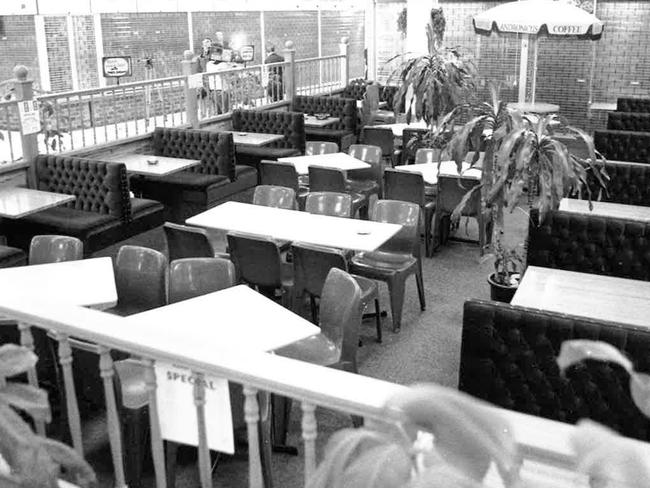

Sitting on the opposite side of the cafe are Carol Dickinson, 47, her daughter Belinda, 20 and 17-year-old friend Rachelle Milburn.
Rachelle starts moving towards Frankum and is shot in the head.
Sacrificing her own life to save her daughter’s, Carol pushes Belinda behind a pot plant, enabling her to scurry away. As she screams for her daughter’s life, Carol is shot in the chest and killed.
People flee, others freeze. Frankum moves towards Franklins supermarket, swinging his gun around firing from the waist and shoulder.
He shoots Helen Xu in the arm, before hitting another woman in the leg and then killing 53-year-old Robertson Kan Hock Voon as he stands in a chemist.

The killer takes the escalator to the upper level carpark and shoots young couple, Beulah Patrick and Brett Lenane, who survive after crawling away in a pool of their own blood.
Next in his sights are George Sidawy, a cleaner who is shot in the leg, hand, stomach and arm but survive.
Ahead of Frankum is Gregory Read, who having warned people in the carpark about the approaching gunman, is shot in both feet as he dives behind a car.
Bullets keep flying. A number hit a vehicle driven by Margaret Lampe. Luckily, all of them miss her.
Frankum, now on the roof, tries to shoot his way into the adjoining social security department building to gain the high ground as police begin to close in.

When his bullets fail to break the aluminium locks, he puts his gun over the rooftop wall and fires at Strathfield Railway Station and taxi rank. Two passers-by, Yong Wu and Zhao Ou, are wounded before seeking refuge in the station’s tunnel.
Unaware of the unfolding horror, Catherine Noyes drives up to the rooftop where Frankum screams at her to stop. He puts his gun to her cheek through the passenger window and says: “Drive me to Enfield”.
She has gone no further than down a level with the killer when the sound of sirens fill the carpark.
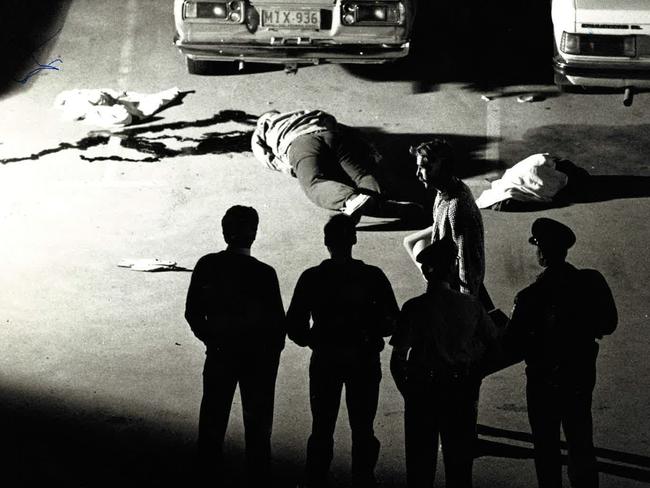
“I’m really sorry, stop,” Frankum says before getting out of the car.
As she drives away, Mrs Noyes sees Frankum kneel and put the rifle to his chin. She looks away and hears him fire the final shot.
In 10 minutes, Frankum has killed seven people, injured six and 50 bullet casings litter the path of his shooting spree.
Coroner Kevin Waller wrote in his report that at this time ‘whatever demon had been impelling Frankum deserted him’.
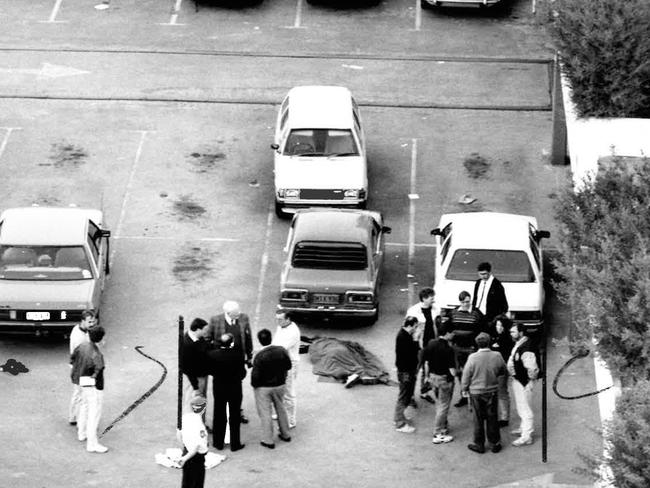
The gunman
FRANKUM was a sexual deviant who loved violence.
The examination of the 171cm, 90kg killer’s personality and life following the day he snapped painted a bleak picture, but not one that would entirely explain his horrific actions.
Coroner Kevin Waller and forensic psychiatrist Dr Rod Milton both find that Frankum’s killing spree was impossible to predict.
He had no criminal record, showed no signs of violence, visited prostitutes regularly and police found pornography and violent movies, magazines and books, including American Psycho by Brett Easton Ellis, in his apartment.
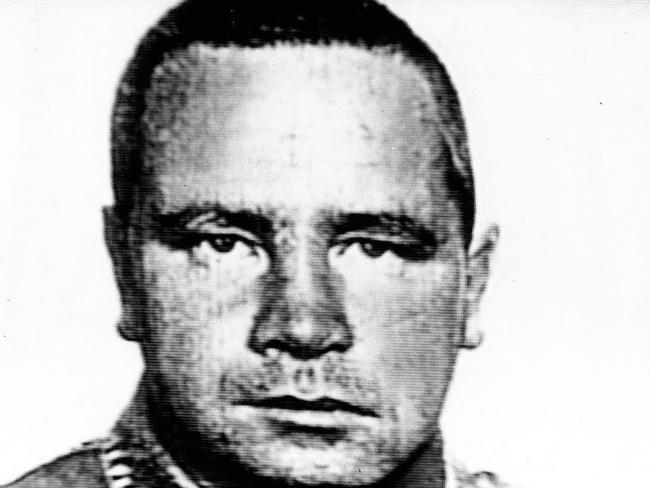
That particular novel, which describes in graphic detail a serial killer’s murders of innocent victims, was said to be “well-thumbed”.
Frankum was raised with a strict upbringing, low on affection and approval.
He went to Newington College and Homebush Boys High School and afterwards had a number of “dead-end jobs” before spending the last year of his life as a taxi driver.
Frankum’s father died of emphysema five years before the massacre and in April, 1990 his grief-stricken mother gassed herself in her car inside her garage at North Strathfield.
He spent much of his $30,000 inheritance visiting prostitutes a few times a week.

Frankum saw them for “sexual relief” which Coroner Waller said was “bizarre in the extreme”. It also left him broke.
A prostitute he visited regularly told police sexual release was the major thing in his life and “if that was going to cease, that could have been catastrophic for him.”
With both his parents dead he moved into their unit with his younger sister, Gaynor, and her boyfriend, Darin Chalk.
Neighbours at the time described him as a loner who was friendly, quiet, did not stand out and who only left home to drive his cab.
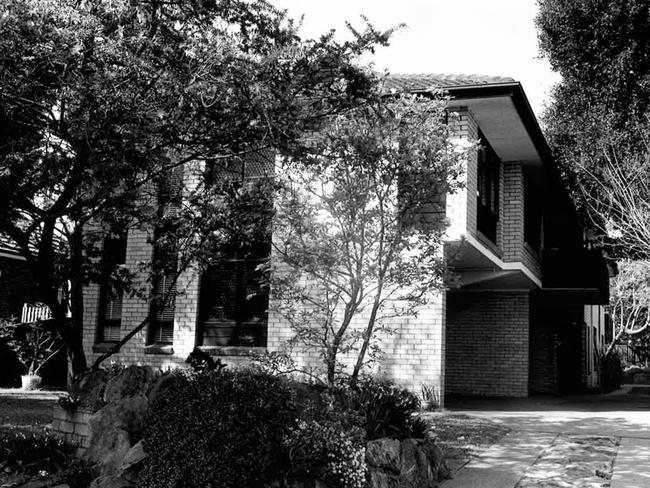
In September 1990, Frankum obtained a shooter’s licence and in December began seeing a psychologist for depression. He stopped visiting him in February.
On January 16, 1991 he purchased the 7.62mm SKS self-loading assault rifle, 100 rounds of ammunition and three magazines from Smith’s Sports Store in the city.
He told Chalk it was for protection because “it’s a f***ed up world out there and there’s some weird f***ers out there”.
Frankum bought the bowie knife and a set of handcuffs in April and tried to have the knife professionally sharpened to a razor’s edge at a Mister Minit operator in July.

“It is clear that by this time he had killing on his mind,” Coroner Waller wrote.
The day before the massacre Frankum had his head shaved and he was thought to be sharpening the bowie knife on an oil stone behind a locked door when his sister arrived home.
Dr Milton found that he was ‘without severe mental disorder or previous evidence of severe aggression’.
He proposed anger, guilt, conflict and having no money as motivating forces behind Frankum’s rampage.
He was angry because he was a failure and emasculated by his parents, he felt guilt over his mother’s suicide, he had conflict with his sister over his grandmother’s estate and his money had run out so he could no longer alleviate his loneliness with prostitutes.
Dr Milton said those factors alone were not sufficient to explain his actions and that a society which increasingly glorified violence may have pushed him over the edge.
He concluded that his exposure to violent material combined with his vulnerable personality due to tragedies leading up the shooting went a long way to explaining his actions.
The survivor
GREGORY Read was standing in a hardware store within eyeshot of The Coffee Pot waiting to pay for a broom and a toilet seat.
Minutes later he was gunned down but not before he had helped save the lives of many.
“He had a 20-inch bowie knife so it was very large, very demonstrative,” Mr Read said.
“He turned around after he had a coffee and when this girl had her back turned to him he drove the bowie knife straight between her shoulder blades downwards.

“He then pulled the rifle out of the pack and started shooting and I went down on one knee and looked out the door and he had fired about six shots.
“I saw him run alongside and I noticed when people laid down on the ground he wasn’t shooting them so I said ‘this is what I’ve got to do’ and I went ahead.”
Read, a Vietnam veteran who weighed 140kg at the time, felt his body fill with adrenalin as he ran up the stairs three-at-a-time to the carpark to warn people to lie down.
“I put my head over the balcony and he fired two shots at me and I had two bullets go very close to my face,” Mr Read said.
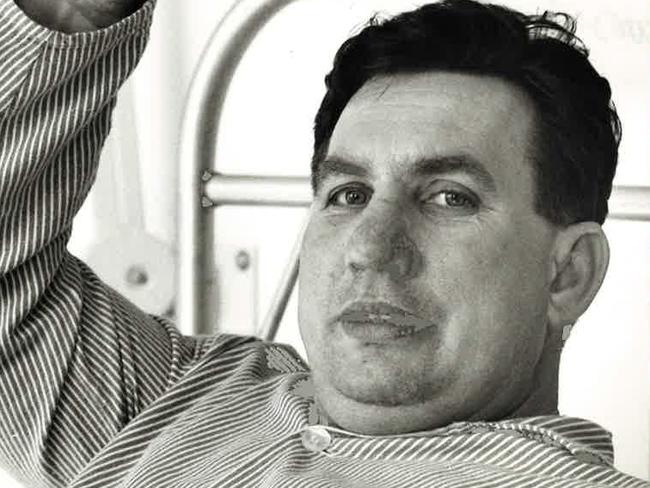
“I went out of the glass doors to the carpark and there were couples standing. I said ‘quick there’s a killer behind me, lay down on the ground and he won’t shoot you’.”
Read managed to get 10 people on the ground before Frankum spotted him.
“He could see what I was doing,” Mr Read said.
“I was out in the open and I was telling this lady ‘lay down in your car, there’s a killer behind me’ and she said ‘it’s too late, he’s right behind you’.
Frankum standing 20 feet away had his rifle pointed at Read.
“You can hear your heartbeat and adrenalin is going through your system because you are physically doing things you possibly couldn’t do before,” Mr Read said.
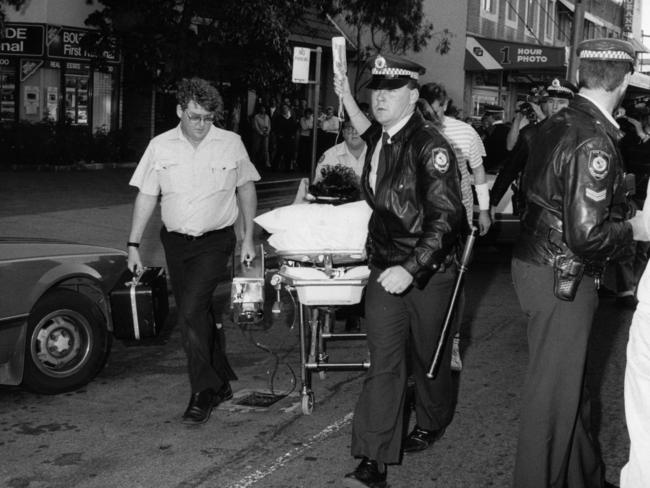
“I looked up and saw the barrel and I thought ‘I’m gone’. I dived to the side of my car and he fired when I was jumping through the air and that was how I got shot in the feet.”
Frankum continued his shooting spree on the rooftop before he returned to the upper level of the carpark.
“After he had wounded and killed all these people he said ‘I’m sorry’ to a woman in a car and leant the rifle down and blew his brains out.”
A year later Read was awarded the Star of Courage for conspicuous courage in the circumstances of great peril.
The investigator
RETIRED NSW Police Commissioner Ken Moroney remembers the Strathfield Massacre as the most horrifying event he witnessed in his 42 years of policing.
Filling in as Acting South West Region Commander, he was met at the entrance to the plaza by Detective Chief Inspector Adrian Allingham.
“I distinctly remember him saying there had been a number of murders and that the offender appears to have taken his own life on the roof of the shopping centre,” Mr Moroney said.
“I had seen deceased bodies, I had seen deceased murdered bodies, but not withstanding his words to me I couldn’t have comprehended what I was about to see.”
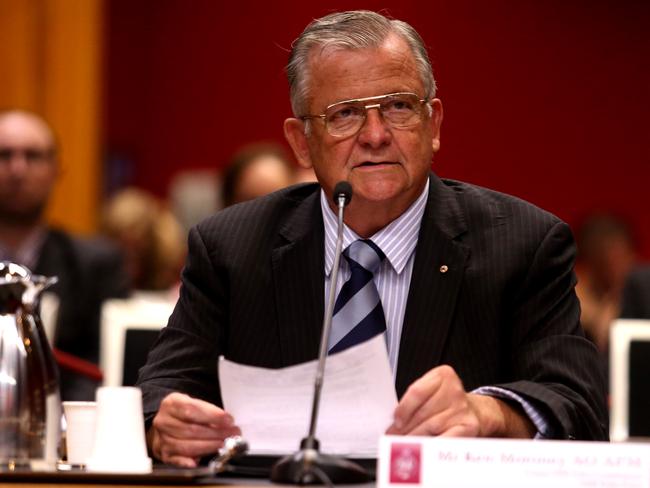
As frantic friends and relatives gathered behind police tape, Moroney went in to view the trail of death left by Frankum.
“I remember walking in and the deceased were either still lying in The Coffee Pot and variously around the place,” Mr Moroney said.
“I stood there and it was almost as if time had frozen over and I couldn’t comprehend the nature of the carnage.
“I had seen murdered bodies but I had never seen that many in one place at one time and all of sudden the enormity of what had occurred started to ring home to me.”
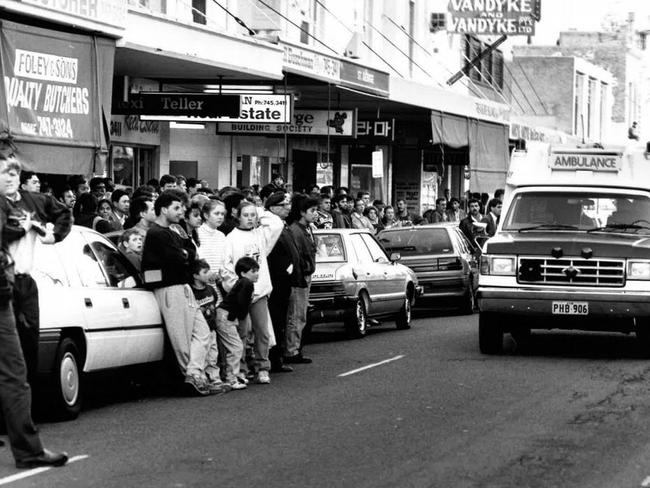
The memories of what he saw that day he said out of respect for the victim’s families were too gruesome to reveal the full details of.
“We came to The Coffee Pot and my vivid memory today is of the three women — there was a mother and daughter and a niece who had been sitting directly behind Frankum,” Mr Moroney said.
“He had been drinking coffee for a number of hours, then in a split moment of time what went through his mind only he and God know and then he turned and he stabbed the first victim and I vividly recall her.”

Moroney was then faced with the delicate job of telling the families about the fate which had befallen their loved ones.
“The owner that was killed he was close by and I remember when we were outside of the Strathfield plaza the family of that good man,” Mr Moroney said.
“I remember the family pleading to let them in so they could find their father or brother and the difficult task police had of preserving the crime scene and trying to provide reassurance to family members at the same time.
“It was one of those indelible experiences which cannot and will not be forgotten.”
The fallout
BEFORE the Strathfield Massacre gun-control was seen as a political death wish.
At the time there was no limit on the number of guns you could own and semiautomatic rifles could be bought without registration.
Rebecca Peters, who led the charge to strengthen gun laws as co-ordinator of the National Coalition for Gun Control (NCGC), said that changed after Strathfield.
“Anyone without a serious criminal record, anyone who hadn’t already been convicted of homicide could buy a gun,” Ms Peters said.
“It was an open invitation not only for people who wanted to have an efficient manner of killing people but all sorts of gun traffickers and it seemed completely mad.”

Seeing loopholes in state laws, Peters began campaigning for change.
“Then there was this shocking thing that happened in a public place,” Ms Peters said.
A huge public demonstration in support of stronger gun laws followed.
The NSW Government put restrictions on semiautomatic weapons which helped kick start the move for gun law reform.
A massacre in Terrigal happened in 1992 continuing the momentum for change.
The Australasian Police Ministers Council met and stressed gun laws needed to be uniform across Australia to combat gun trafficking.


“The priorities being uniform gun laws across the states and a ban on semiautomatic weapons and registration of all guns,” Ms Peters said.
“One of our demands was also proof of reason. The Strathfield shooter had claimed recreational hunting as his reason despite the fact that everyone who knew him said he had never been hunting in his life.”
Ms Peters said it was important to remember Strathfield, not just Port Arthur, Australia’s worst mass killing, led to Australia’s world-leading gun law changes.
“I feel the people who died at the Strathfield Massacre they also didn’t die in vain, that tragedy contributed to something,” Ms Peters said.
“A lot of people think they changed instantly after Port Arthur. Unfortunately in topics to do with health and safety they sometimes advance one tragedy at a time.”
OTHER NEWS
POLICE TO DIG FOR WILLIAM’S BODY
ANTI-TERROR CCTV TO BE INSTALLED AT 50 SCHOOLS
BRAZEN CHEEK OF THE TEEN GRAFFITI VANDALS


 Whatever demon had been impelling Frankum deserted him
Whatever demon had been impelling Frankum deserted him 
